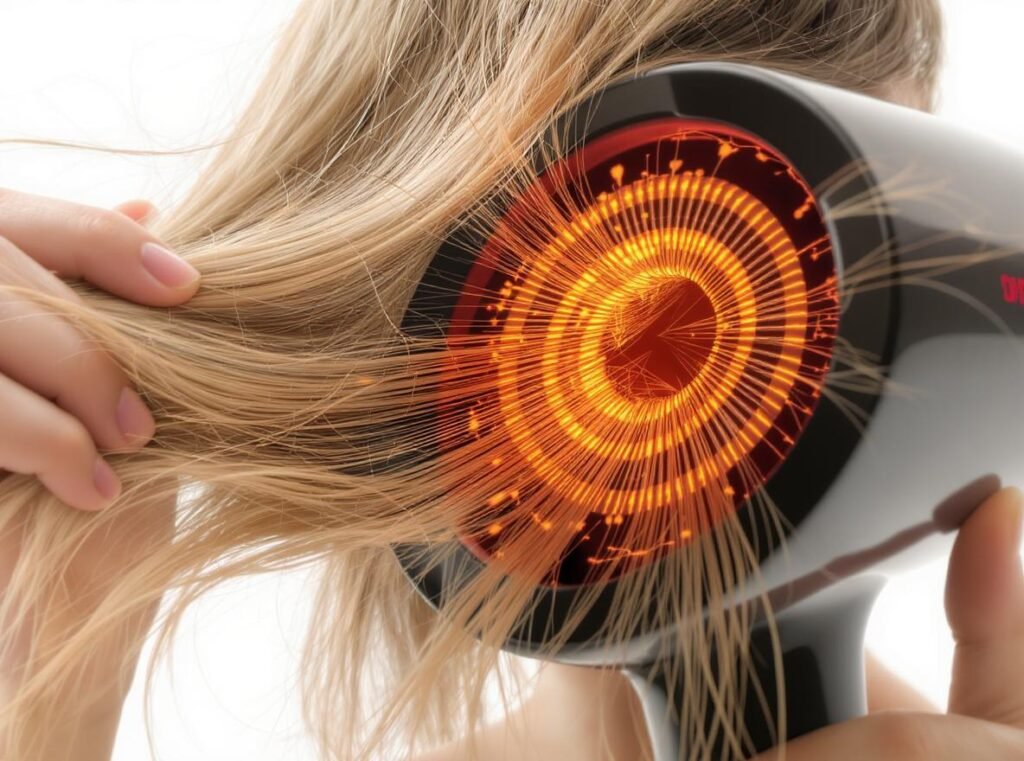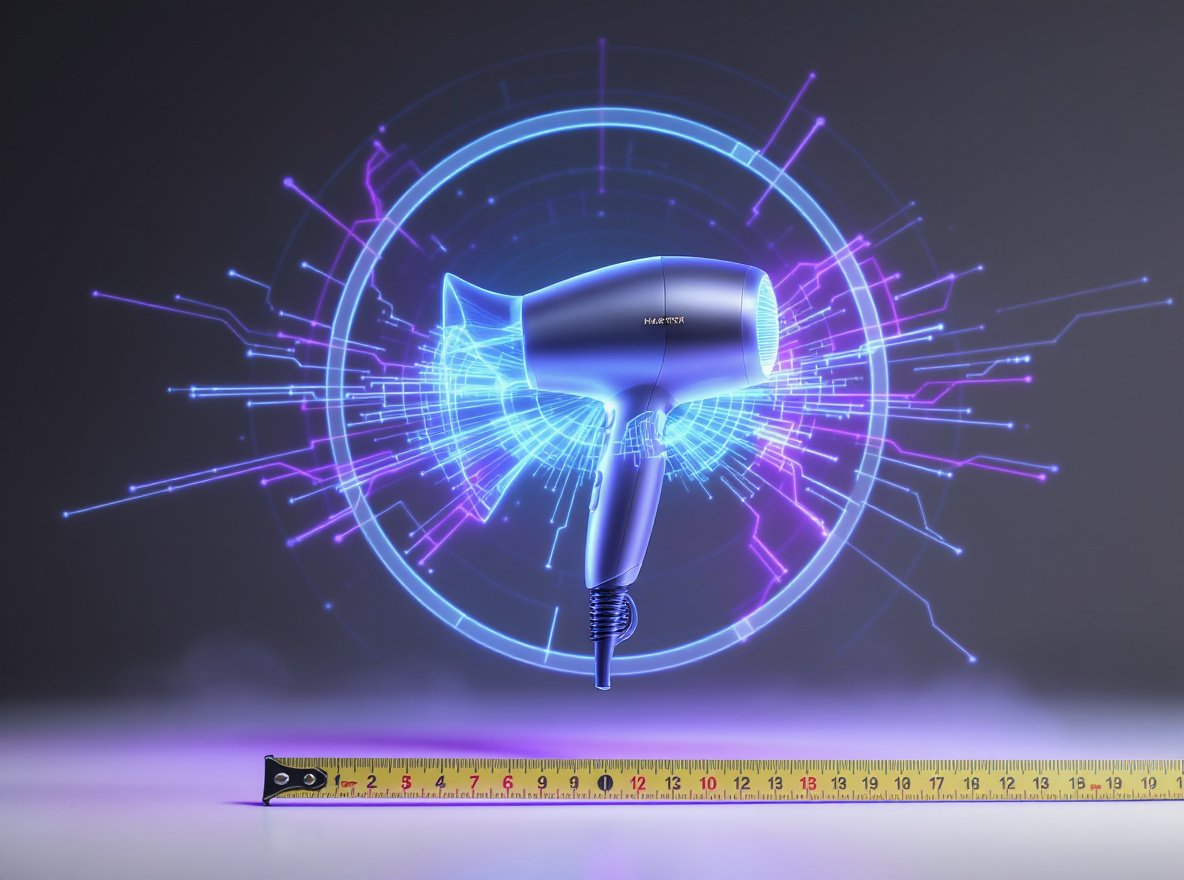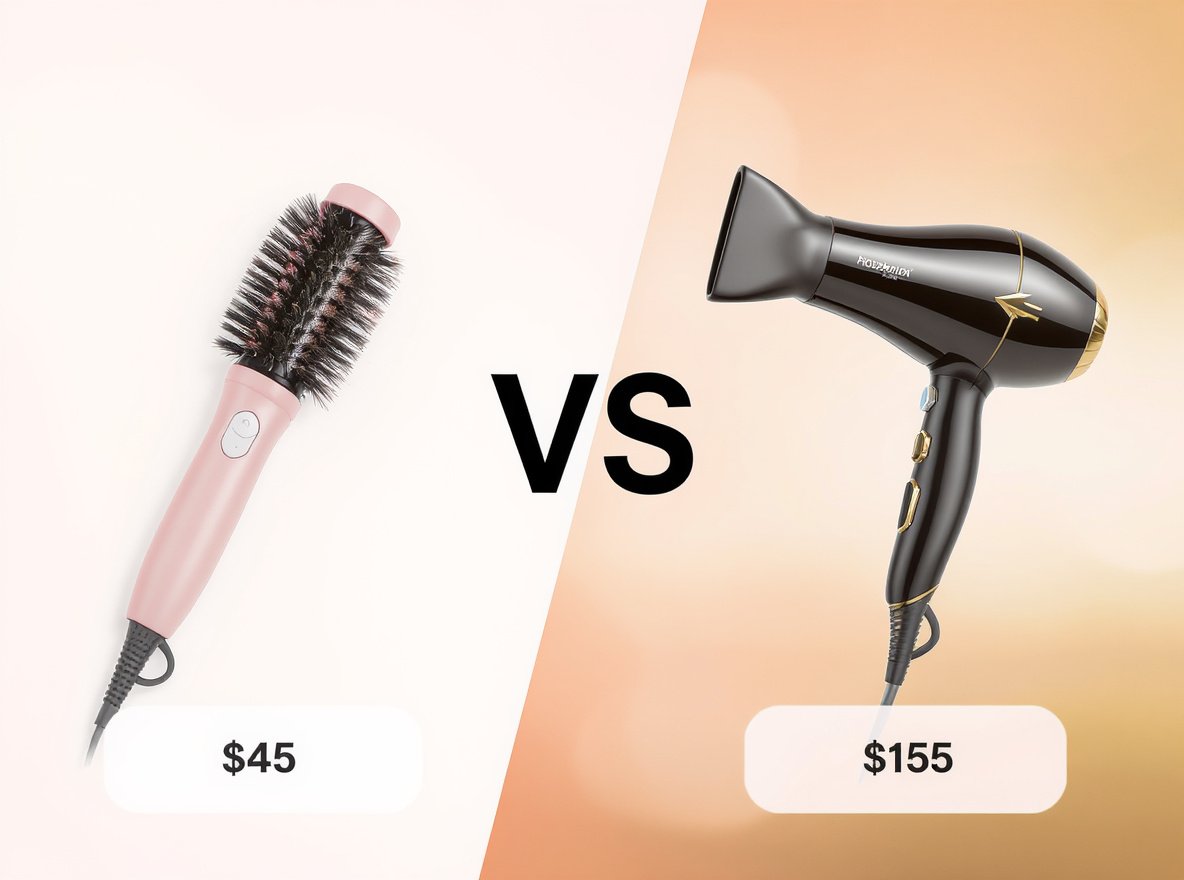Are you struggling to find a hair dryer that won’t worsen your already damaged or chemically treated hair? If your hair has been through bleaching, coloring, perming, or frequent heat styling, you’re not alone in this frustrating search. The wrong hair dryer can turn your delicate strands into a brittle, frizzy mess.
The best hair dryer for damaged or chemically treated hair features ionic and ceramic technology, operates at 1400-1875 watts with smart temperature control, offers multiple heat settings with cool shot function, and includes specialized attachments. These features work together to minimize heat damage while sealing the hair cuticle for smoother, healthier-looking results.
Let’s dive deeper into why these features matter and how to choose the perfect hair dryer that will protect your vulnerable hair while delivering salon-quality results.
Table of Contents
ToggleWhy Do Damaged and Chemically Treated Hair Need Special Care?
Chemical processes like coloring, bleaching, and perming break down the hair’s natural protective barriers, making your strands fragile and vulnerable to further damage.
Damaged and chemically treated hair tends to be fragile, dry, and prone to breakage because the hair’s internal moisture and protective cuticle layer are compromised. High heat and harsh styling tools can exacerbate damage by stripping moisture, causing frizz, and weakening the hair shaft.
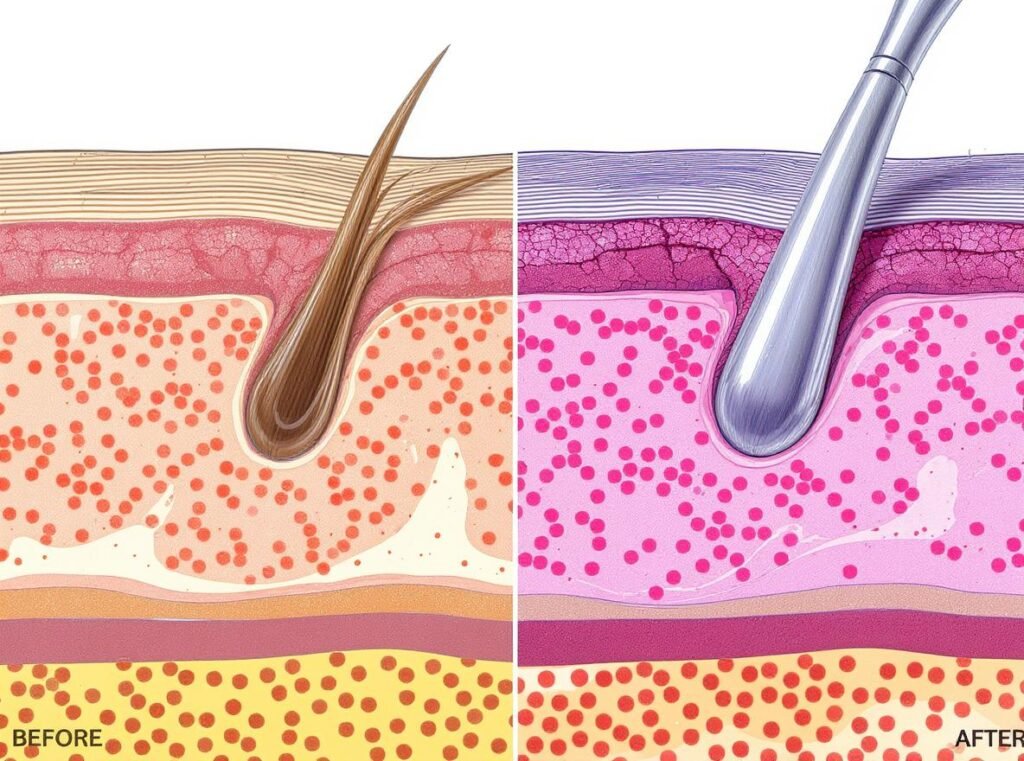
When hair undergoes chemical treatments, the cuticle layer becomes lifted and damaged, creating gaps where moisture escapes easily. This compromised structure makes your hair particularly susceptible to heat damage. Traditional hair dryers with high heat and poor temperature control can literally cook these fragile strands.
The consequences of using inappropriate drying methods on damaged hair include:
- Increased breakage and split ends that worsen over time
- Accelerated color fading and unwanted brassiness
- Extreme dryness that leads to brittleness and lack of elasticity
- Unmanageable frizz and static that resists styling efforts
Understanding this vulnerability is the first step toward choosing protective styling tools that work with your hair’s compromised state rather than against it.
What Hair Dryer Technologies Protect Damaged Hair?
Modern hair dryer technology has evolved significantly to address the specific needs of damaged and chemically treated hair.
The most effective technologies for damaged hair include ionic technology that emits negative ions to reduce frizz, ceramic and tourmaline materials that provide gentle far-infrared heat, smart temperature control systems, and innovative light-based drying methods that minimize traditional heat exposure.
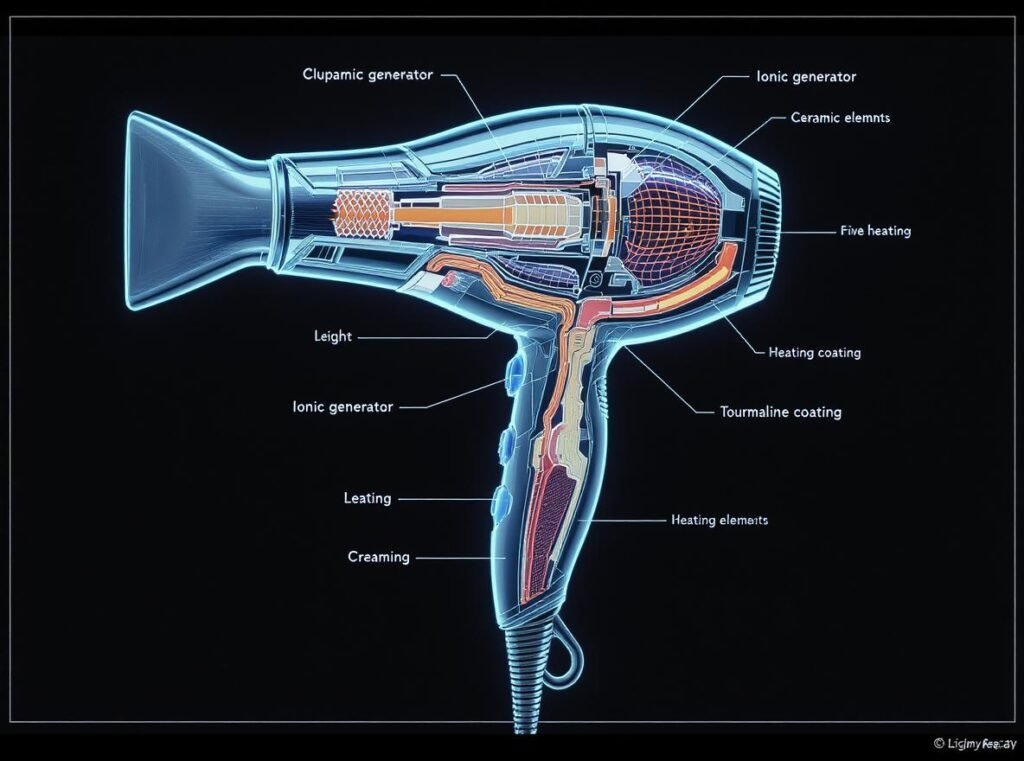
Advanced Protective Technologies
Ionic Technology Benefits:
Ionic dryers emit negative ions that break down water molecules for faster drying while sealing the hair cuticle. This technology reduces static, enhances shine, and helps lock in moisture that damaged hair desperately needs.
Ceramic and Tourmaline Heating:
These materials emit far-infrared heat that penetrates hair gently from the inside out, providing even heat distribution without the harsh surface heating that can damage compromised cuticles.
Smart Temperature Control:
Advanced models like the Laifen Swift feature intelligent temperature regulation that prevents overheating by monitoring and adjusting heat levels rapidly, ensuring your hair never gets “overcooked.”
| Technology | Primary Function | Benefit for Damaged Hair | Heat Level |
|---|---|---|---|
| Ionic | Negative ion emission | Reduces frizz, seals cuticles | Variable |
| Ceramic | Even heat distribution | Gentle infrared heating | Low-medium |
| Tourmaline | Far-infrared heat | Moisture retention | Low-medium |
| Smart Control | Temperature monitoring | Prevents overheating | Adaptive |
Innovative Light-Based Technology:
Revolutionary dryers like the Zuvi Halo use light instead of traditional heat to dry water droplets on the hair surface, preserving natural moisture and preventing thermal damage entirely.
What Wattage Should You Choose for Damaged Hair?
Wattage determines your dryer’s power output, but finding the sweet spot is crucial for damaged hair protection.
For damaged or chemically treated hair, choose a dryer with 1400-1875 watts. This range provides sufficient drying power while maintaining better heat control to prevent overheating delicate strands.
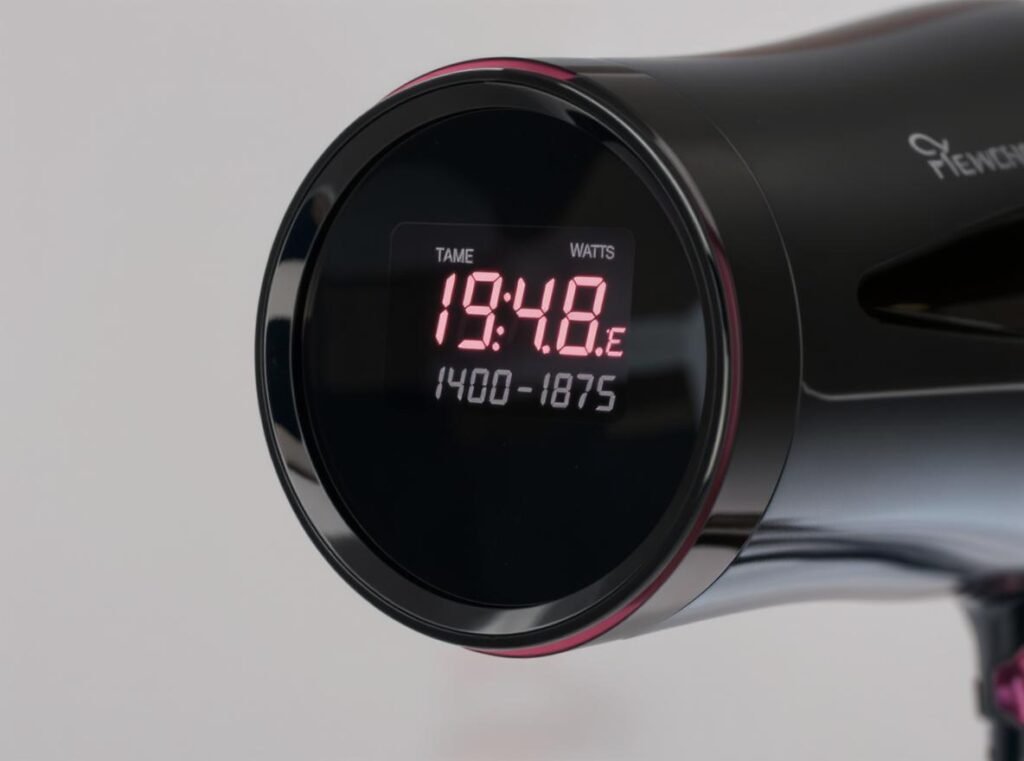
Understanding Wattage for Hair Protection
Lower wattage doesn’t necessarily mean less effective drying when combined with advanced technologies. The key is finding sufficient power that allows for:
- Controlled heat output that won’t overwhelm fragile hair
- Adequate airflow for efficient drying without excessive heat exposure
- Better temperature regulation across different heat settings
- Reduced risk of hot spots that can burn compromised hair
Wattage Recommendations by Hair Condition:
- Severely damaged hair: 1400-1500 watts
- Moderately damaged hair: 1500-1700 watts
- Thick, chemically treated hair: 1700-1875 watts
Expert recommendations consistently favor the 1400-watt range for damaged hair, as it provides effective drying without the aggressive heat that higher wattages can generate.
How Important Are Heat and Speed Settings?
Multiple heat and speed settings are absolutely crucial for protecting damaged hair during the drying process.
Heat and speed settings are essential for damaged hair protection. Look for dryers with at least 3 heat settings, 2 speed settings, and a cool shot button. These controls allow you to customize the drying experience based on your hair’s daily condition and prevent further damage.
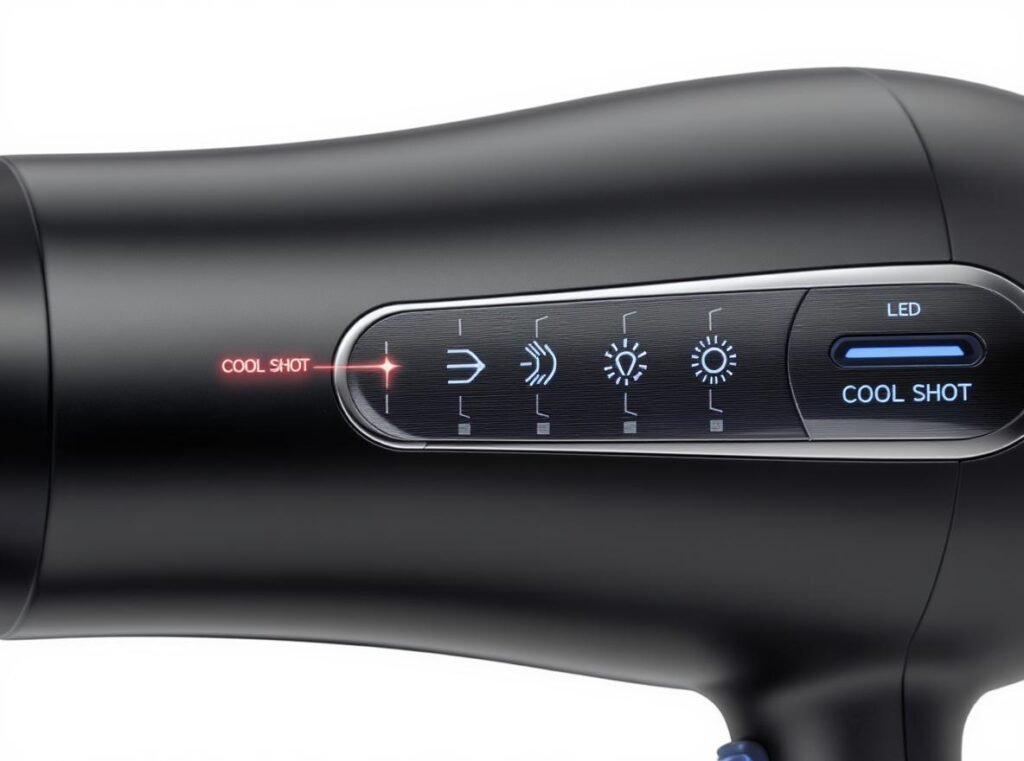
Essential Control Features
Heat Setting Hierarchy:
- Low heat: For very damaged, fine, or freshly treated hair
- Medium heat: For moderately damaged or thicker hair sections
- Cool setting: For sealing cuticles and setting styles
Speed Control Benefits:
Variable speed settings let you adjust airflow intensity. Lower speeds provide gentler drying for fragile areas, while higher speeds can be used sparingly on healthier sections.
Cool Shot Function Importance:
The cool shot button is particularly vital for damaged hair because it:
- Seals the hair cuticle to lock in moisture and treatments
- Sets your style without additional heat exposure
- Reduces frizz and flyaways by smoothing the cuticle layer
- Provides a final protective seal that enhances shine
This combination of controls ensures you can adapt your drying routine to your hair’s varying needs throughout your styling process.
What Attachments Should You Look For?
The right attachments can make the difference between further damage and protective styling for compromised hair.
Essential attachments for damaged hair include a concentrator nozzle for precise airflow control, a diffuser for curly or wavy damaged hair, and specialized gentle air attachments. These tools help distribute heat more evenly and reduce direct heat exposure.
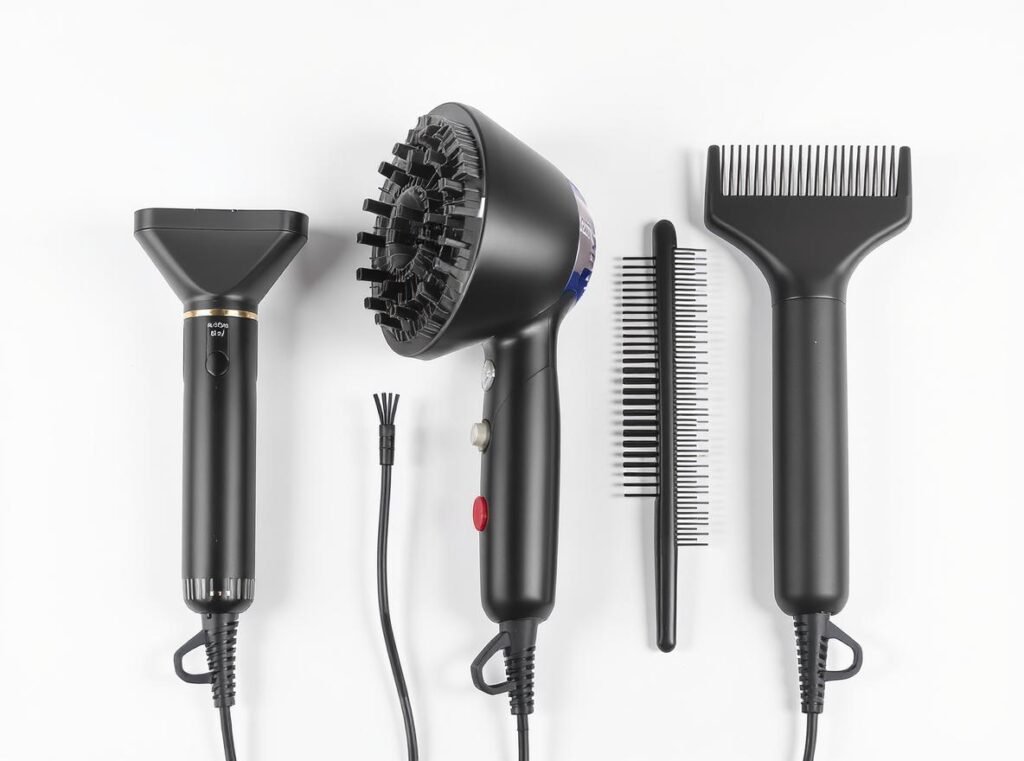
Critical Attachment Functions
Concentrator Nozzle:
- Focuses airflow precisely where needed
- Prevents heat from scattering randomly across hair
- Allows for controlled sectioning and styling
- Reduces overall drying time through efficiency
Diffuser Advantages:
- Disperses heat over a larger surface area
- Minimizes direct heat contact with fragile strands
- Maintains natural curl and wave patterns without disruption
- Reduces frizz in textured, damaged hair
Specialized Attachments:
Premium models like the Dyson Supersonic offer unique attachments such as:
- Flyaway smoothers for finishing touches
- Gentle air attachments for ultra-sensitive hair
- Wide-tooth comb attachments for detangling while drying
These specialized tools demonstrate how attachment design can specifically address the challenges of styling damaged hair safely.
How Should You Prepare Damaged Hair Before Blow-Drying?
Proper preparation is absolutely essential when working with damaged or chemically treated hair.
Always apply a heat protectant product to damp hair before blow-drying, gently detangle with a wide-tooth comb, section hair for controlled drying, and avoid using the highest heat settings initially. This preparation routine creates a protective barrier and prevents additional damage during styling.
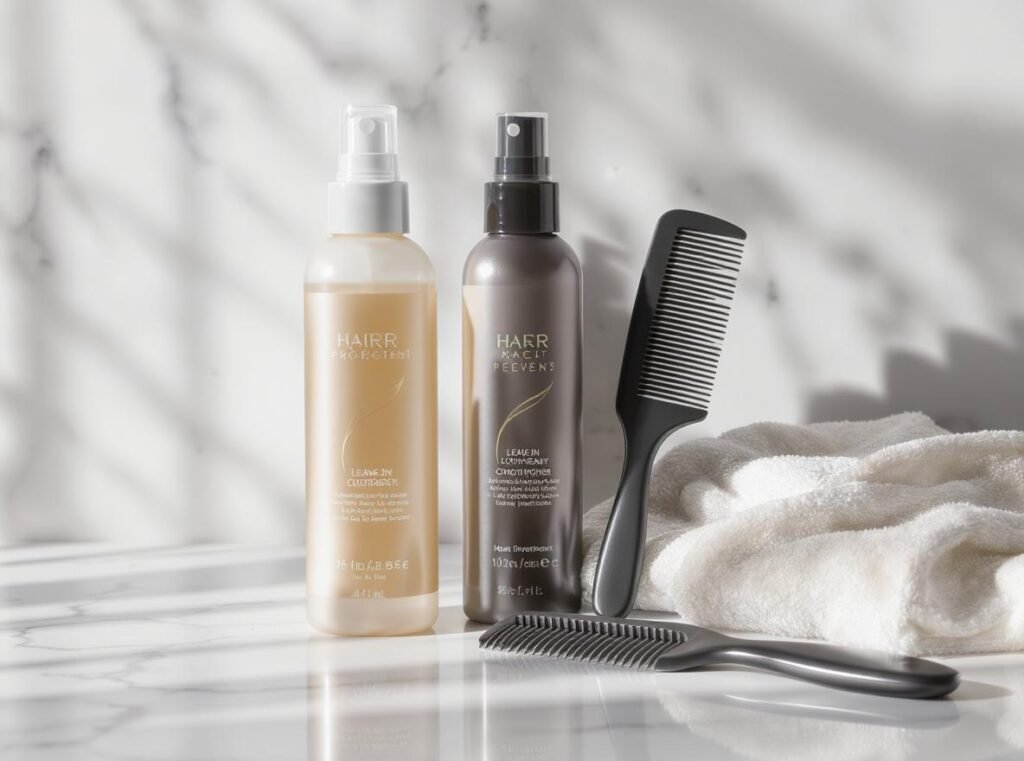
Comprehensive Pre-Drying Protocol
Essential Preparation Steps:
Start with freshly washed hair using a sulfate-free, moisturizing shampoo followed by a deep conditioning treatment. Your preparation routine should include:
- Gently squeeze out excess water with a microfiber towel (never rough towel drying)
- Apply leave-in conditioner focusing on mid-lengths and ends
- Use a comprehensive heat protectant spray on all sections
- Detangle carefully with a wide-tooth comb, starting from the ends and working upward
Product Application Strategy:
Layer your protective products strategically. Apply leave-in conditioner first to provide moisture, then heat protectant to create a thermal barrier. This double protection is crucial for hair that’s already compromised.
| Preparation Step | Product Type | Application Focus | Benefit |
|---|---|---|---|
| 1. Water removal | Microfiber towel | Gentle blotting | Reduces drying time |
| 2. Moisture boost | Leave-in conditioner | Mid-lengths to ends | Adds protective moisture |
| 3. Heat barrier | Heat protectant spray | All sections evenly | Prevents thermal damage |
| 4. Detangling | Wide-tooth comb | Ends to roots | Prevents breakage |
This thorough preparation significantly reduces the actual blow-drying time needed, minimizing total heat exposure while ensuring maximum protection.
What’s the Proper Technique for Drying Damaged Hair?
Your drying technique can make or break your hair’s health, especially when dealing with already compromised strands.
Use the lowest effective heat setting, keep the dryer moving constantly, maintain 6 inches distance from your hair, dry from roots to ends gently, and always finish with a cool shot to seal the cuticle. This technique minimizes heat damage while maximizing styling results.
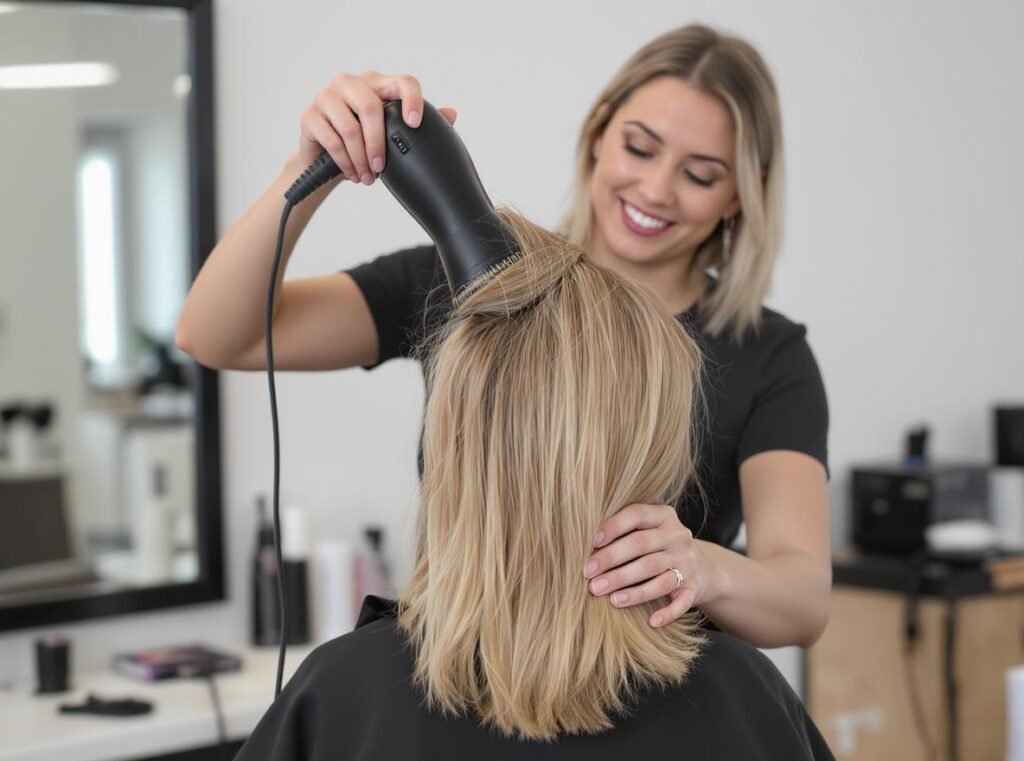
Professional Drying Method
Sectioning Strategy:
Divide damp hair into 4-6 sections depending on thickness and damage level. Smaller sections allow for more controlled drying without overheating any single area.
Heat Application Technique:
- Start with the lowest heat setting that’s effective
- Hold the dryer at a slight angle, never perpendicular to hair
- Keep the dryer moving constantly to prevent heat concentration
- Maintain 6 inches distance from your scalp and hair
- Direct airflow down the hair shaft to smooth cuticles
Progressive Drying Method:
Begin with underneath sections and work your way up. This prevents upper layers from receiving excessive heat exposure while you work on lower sections.
Cool Shot Finishing:
Once each section reaches about 80% dryness, switch to cool air to complete the process. This final step seals the cuticle, locks in moisture, and provides lasting style hold without additional heat damage.
Avoid concentrating heat on one spot for more than a few seconds, and never use the highest heat setting on damaged hair, regardless of thickness.
How Often Should You Replace Your Hair Dryer?
Even the best hair dryers lose efficiency over time, potentially compromising your hair’s health.
Replace your hair dryer every 3-5 years for optimal performance and hair protection. Signs you need replacement include inconsistent heat distribution, longer drying times, strange noises, overheating, or visible wear on attachments that could damage your hair.
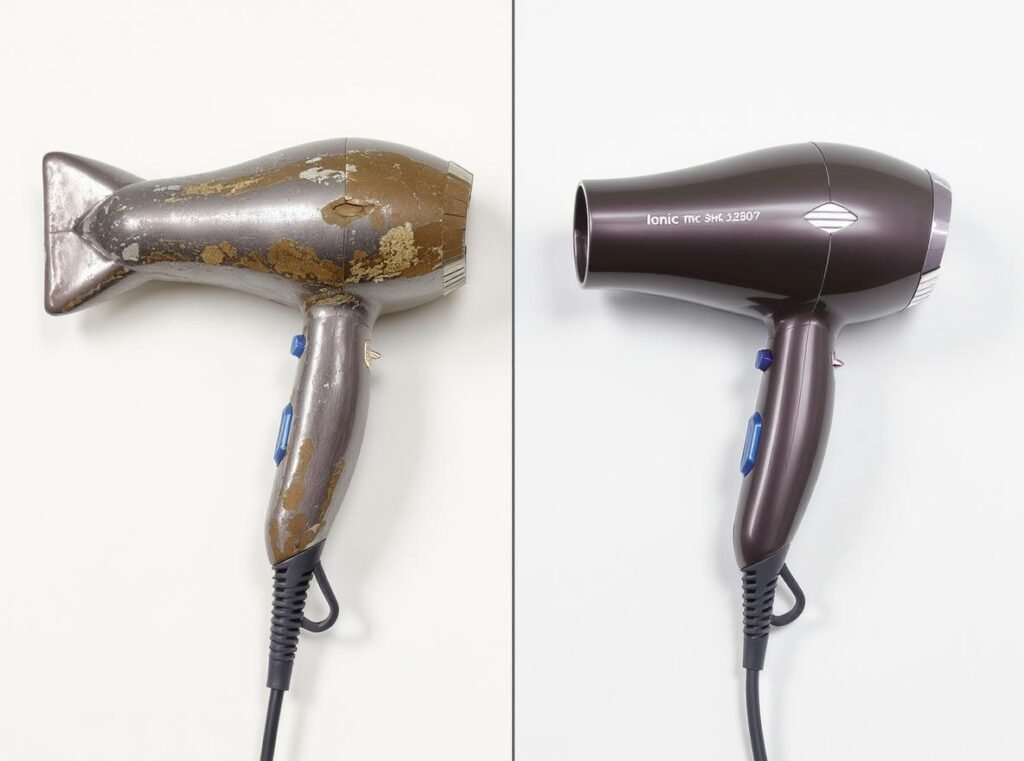
Replacement Warning Signs
Performance Indicators:
- Hair feels more damaged after drying sessions
- Increased frizz and static compared to previous results
- Significantly longer drying times than when new
- Inconsistent airflow or temperature control
- Overheating smells or burning odors
Physical Wear Signs:
- Cracked or damaged attachments
- Frayed or exposed wiring
- Loose or rattling internal components
- Filter clogs that can’t be cleaned effectively
Maintenance for Longevity:
Extend your dryer’s effective life and maintain hair protection by:
- Cleaning the filter monthly to maintain proper airflow
- Checking for blocked vents that force the motor to work harder
- Storing properly to prevent damage from drops or moisture
- Replacing worn attachments promptly to maintain even heat distribution
Regular maintenance not only extends your investment but ensures consistent performance that protects your hair’s health over time.
What Should Wholesale Buyers Look for in Professional Hair Dryers?
Professional-grade dryers designed for damaged hair require specific features that ensure consistent performance and customer satisfaction.
Professional hair dryers for damaged hair should feature AC motors for consistent power, multi-technology integration (ionic, ceramic, tourmaline), precision temperature controls, durable construction, and comprehensive warranty coverage. These specifications ensure reliable performance for commercial use.
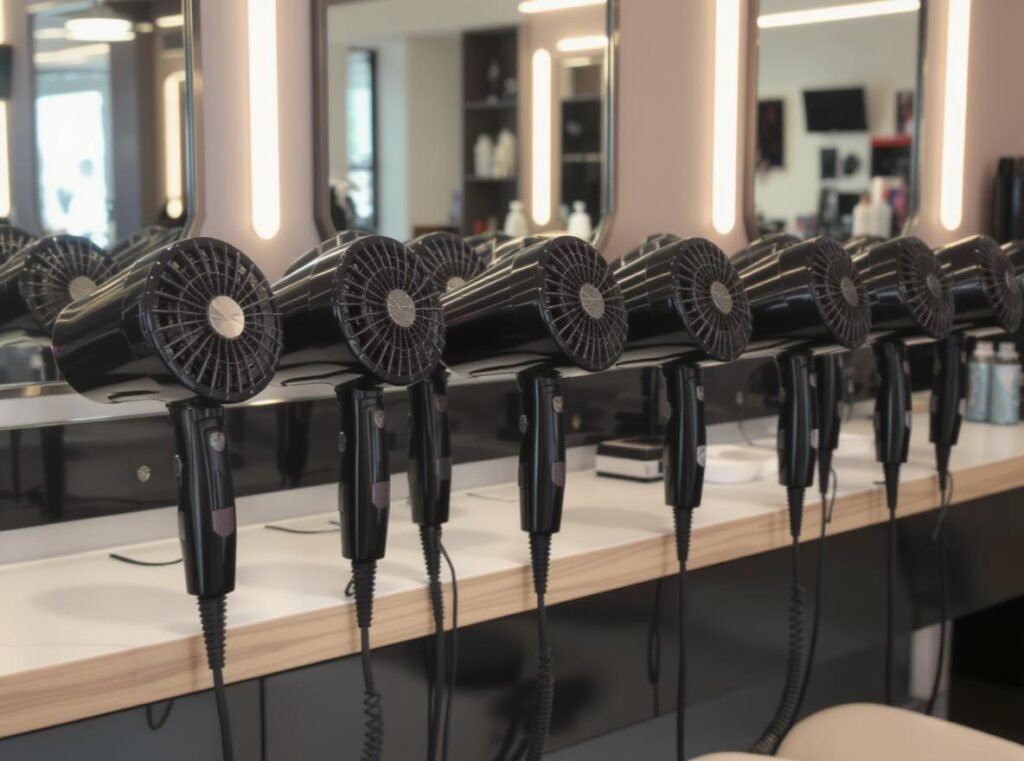
Professional Specification Requirements
Motor Quality Standards:
AC motors provide superior performance compared to DC motors, offering:
- More consistent power output over extended use
- Longer operational life in professional settings
- Better heat regulation under continuous use
- Reduced maintenance requirements
Technology Integration:
Look for dryers that combine multiple protective technologies rather than relying on single features:
- Ionic + Ceramic combinations for comprehensive protection
- Smart temperature control systems for precision heat management
- Advanced airflow design for efficient, gentle drying
Build Quality Indicators:
Professional models should demonstrate:
- Ergonomic design for comfortable extended use
- Heat-resistant housing that doesn’t become uncomfortably hot
- Secure attachment fitting systems
- Intuitive, durable control interfaces
| Feature Category | Consumer Grade | Professional Grade | Commercial Benefit |
|---|---|---|---|
| Motor Type | DC Motor (1-2 years) | AC Motor (5+ years) | Consistent performance |
| Technology | Single feature | Multi-technology | Versatile hair protection |
| Warranty | 1 year limited | 2-3 years comprehensive | Business reliability |
| Build Quality | Basic materials | Commercial-grade | Durability under heavy use |
For businesses seeking professional-grade options specifically designed for damaged hair care, explore models like the Conason P1C high-speed hair dryer, which integrates advanced ionic technology with precise temperature control ideal for sensitive hair types.
Which Specific Hair Dryer Models Excel for Damaged Hair?
Based on current market analysis and professional testing, certain models consistently deliver superior results for damaged and chemically treated hair.
Top-performing hair dryers for damaged hair include the Zuvi Halo for light-based gentle drying, Dyson Supersonic for smart heat control, L’Oréal Professional Airlight Pro for infrared technology, and Bio Ionic GrapheneMX for low-temperature effective drying. Each offers unique advantages for different hair protection needs.
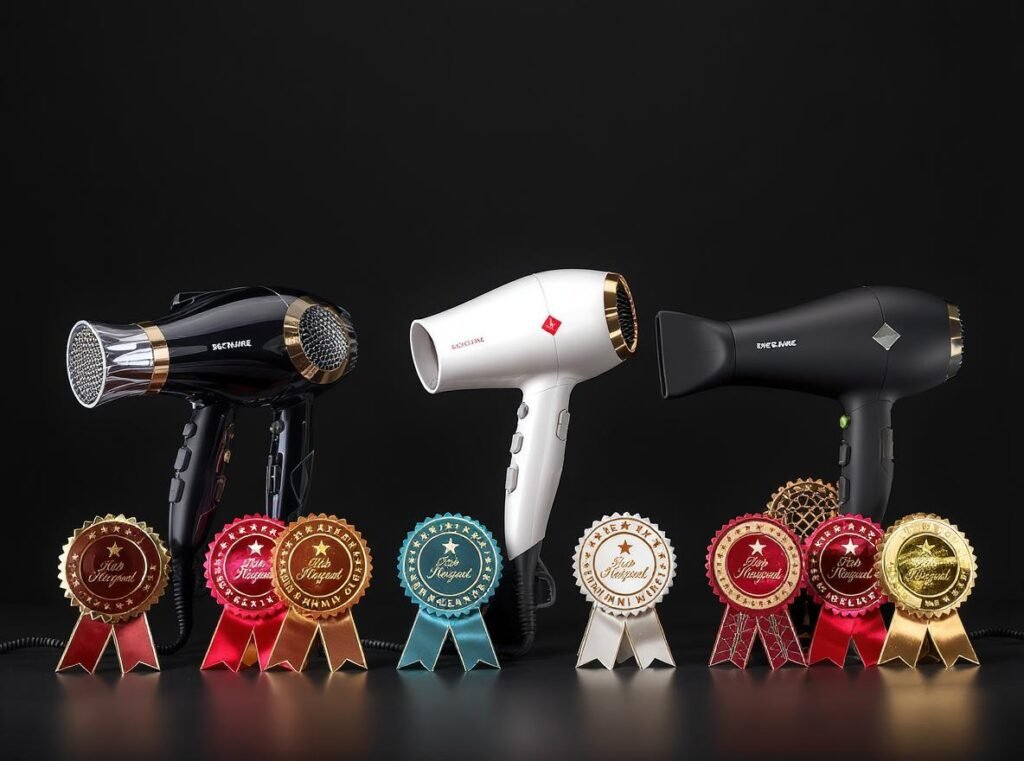
Professional Model Analysis
Revolutionary Light Technology:
The Zuvi Halo Hair Dryer represents a breakthrough in hair drying technology, using light instead of traditional heat to evaporate water droplets. While it offers unparalleled gentleness for severely damaged hair, it’s slower for thick hair and provides less airflow control.
Smart Heat Control Leaders:
The Dyson Supersonic features intelligent heat control that measures air temperature over 40 times per second, preventing overheating automatically. Its professional-grade attachments and ionic technology make it a favorite among stylists, though the premium price reflects its advanced features.
Infrared Innovation:
L’Oréal Professional Airlight Pro uses infrared technology to dry hair faster at lower temperatures, retaining moisture while reducing drying time. The customizable settings and app integration offer professional-level control.
Budget-Conscious Options:
The Remington Damage Protection Hair Dryer combines ceramic, ionic, and tourmaline technologies with micro-conditioners at an affordable price point, making professional-grade protection accessible to more consumers.
High-Performance Efficiency:
Bio Ionic GrapheneMX delivers professional results with notably low air temperatures while maintaining fast drying speeds, making it ideal for salon use with damaged hair clients.
For wholesale buyers seeking reliable, professional-grade options, the Conason product collection offers advanced hair dryers engineered specifically with damaged hair protection technologies, combining affordability with professional performance standards.
How Can You Maintain Healthy Hair While Using a Hair Dryer?
Long-term hair health requires a comprehensive approach that extends beyond just choosing the right dryer.
Maintain healthy hair by always using heat protectant products, limiting blow-drying to 2-3 times per week, using the lowest effective heat settings, incorporating deep conditioning treatments, and allowing partial air-drying when possible. This balanced approach helps damaged hair gradually recover while maintaining styling flexibility.
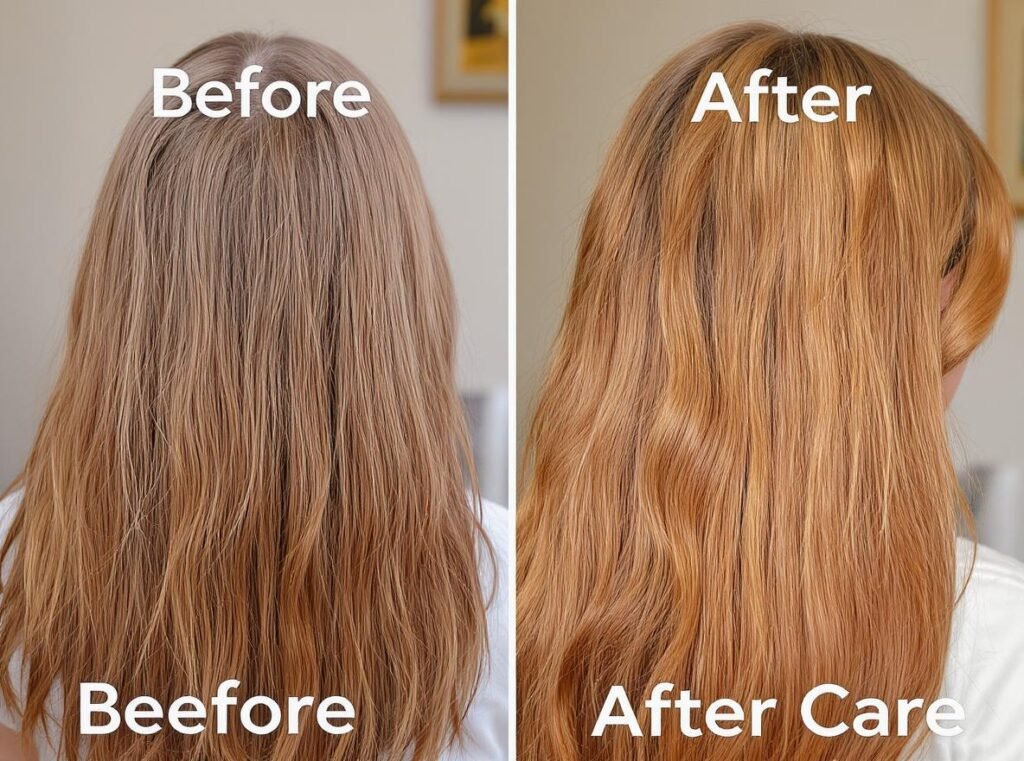
Comprehensive Hair Health Strategy
Daily Protection Routine:
- Apply heat protectant before every styling session
- Use leave-in treatments on non-styling days
- Sleep on silk pillowcases to reduce friction damage
- Avoid brushing wet hair when it’s most vulnerable
Weekly Maintenance Schedule:
- Deep condition treatments once weekly
- Protein treatments monthly for chemically damaged hair
- Regular trims every 6-8 weeks to remove split ends
- Scalp treatments to maintain healthy hair growth
Heat Styling Balance:
Limit blow-drying frequency by:
- Air-drying hair to 50-60% before using heat tools
- Using protective styles that don’t require daily heat exposure
- Alternating between heat styling and no-heat methods
- Choosing lower heat settings consistently over high heat
Nutritional Support:
Support hair health from within through:
- Adequate protein intake for hair structure
- Essential fatty acids for moisture retention
- Proper hydration for overall hair health
- Vitamins that support hair growth and strength
This holistic approach ensures that your hair care routine supports recovery and protection rather than simply managing damage.
Summary
Choosing the best hair dryer for damaged or chemically treated hair requires prioritizing gentle technologies like ionic, ceramic, and smart temperature control over raw power. Look for 1400-1875 watts with multiple heat settings, essential attachments, and professional-grade construction. Remember that proper preparation, technique, and maintenance are equally important as your tool selection for achieving healthy, beautiful results.
Ready to protect your clients’ damaged hair with professional-grade dryers? Browse our collection of advanced hair dryers specifically engineered for damaged hair care at conason.com, or contact our wholesale team to discuss bulk pricing and custom solutions for your business needs.

